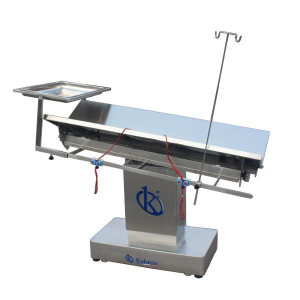Scientific and technological advancement does not discriminate in its scope, improving both our daily life and the delicate and complex procedures in medical science. The adaptation of robotic tools in surgical procedures is a clear example. This article will focus its attention on a vital element of such surgeries, the Veterinary Operating Table, particularly in robot-assisted interventions.
Weaving the relationship between the operating room and technology
Before understanding the relevance of the operating table in the robotic context, it’s crucial to understand the interrelation between the operating room and technology. Modern operating rooms have evolved beyond the traditional image of a surgical space. Advanced equipment, technological innovations, and modern medical practices have turned these spaces into centers of precision, efficiency, and safety. In veterinary medicine, robot-assisted surgeries are already being carried out, incorporating all the necessary equipment for such task.
The relevance of veterinary operating tables
At the center of each robotic surgical procedure is the veterinary operating table. This innovative equipment allows veterinarians to carry out exact and elaborate processes safely, minimizing risk to the animal patient.
The operating table, customized to support the precision of robot-assisted surgery, helps optimize operational efficiency. These tables are designed to be compatible with robotic systems and allow seamless integration with surgical tools.
Features of the veterinary operating table
In a nutshell, the veterinary operating table is a highly flexible and adaptable work surface. This table can be adjusted in height, rotation, and tilt, and most models include heated surfaces to maintain the correct patient temperature during surgery.
The main peculiarity in relation to robot-assisted surgeries is the table’s ability to synchronize with the movements of the robotic system. Thanks to this synchronization, the surgeon can perform movements with precision and efficiency, minimizing risk and maximizing results.
Improvement of surgical procedures
Within robot-assisted surgery, the veterinary operating table plays a leading role in enhancing conventional surgical procedures. The incorporation of robotic tools in veterinary operations offers numerous benefits, from time optimization to the reduction of infection rates.
Using these tables, veterinarians can carry out complex procedures (like endoscopies, refractive surgeries or orthopedic surgeries) with greater effectiveness and efficiency. Animals can receive the best possible treatments, while medical professionals operate in a safe and controlled environment.
In conclusion, the veterinary operating table is a vital piece in the puzzle of robot-assisted surgery. As technology continues to evolve, so will these tables, to meet the growing needs of veterinary practice.

